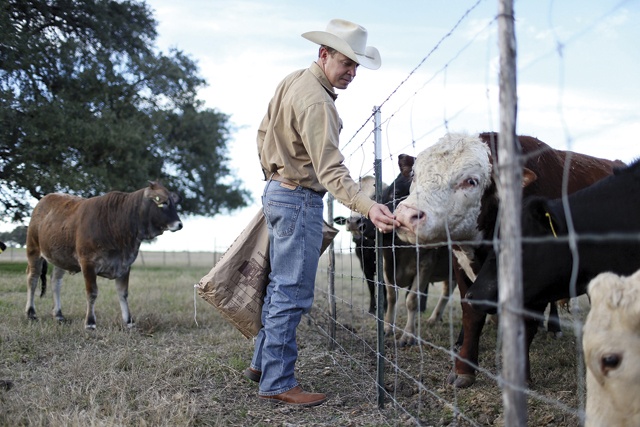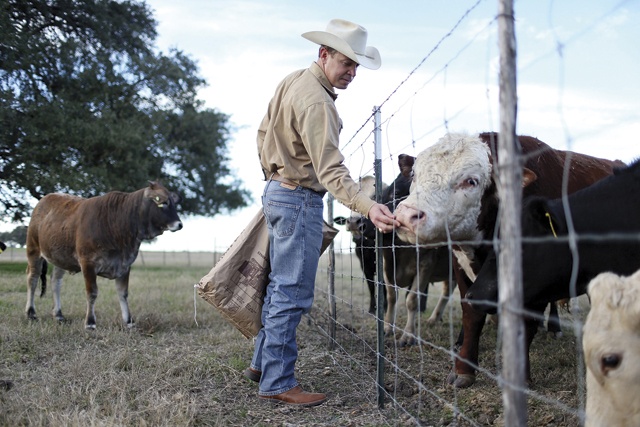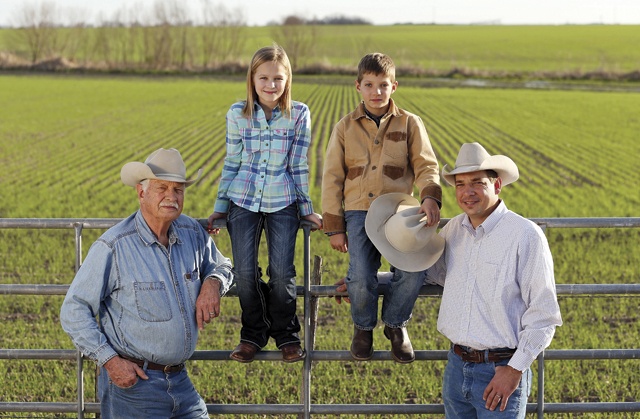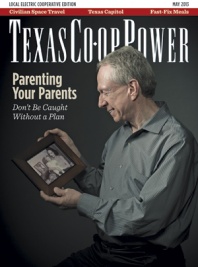More than 108 million Americans watched the Ravens beat the Niners during the Super Bowl on February 3. That’s all fine and good, if you’re a Ravens fan. I joined millions of football fans everywhere, dejected by their teams’ not making it all the way (are you with me Texans fans?), and watched more for the commercials.
One of the most popular ads was for the new Dodge Ram. Set to a portion of the speech “So God Made a Farmer” that the late legendary radio broadcaster Paul Harvey gave at a 1978 Future Farmers of America convention, the ad featured poignant photographs of rural America. Farmers and ranchers, faces worn by the elements; calloused, clasped hands showing years of hard labor; soulful children looking toward the future. The moving piece generated much buzz—and about 15 million YouTube views.
The ad stirred something in me, deep down to a place that many of my fellow city-dwellers don’t know exists. Hearing Harvey’s familiar voice, seeing the images of hardworking farmers and ranchers, I was taken back home. I grew up near and in the small, unincorporated community of D’Hanis, safely sitting near the western border of Medina County. What’s more: I’m a farmer’s daughter. My dad’s name is Austin Clary, and he farms in Medina and Uvalde counties.
The ad might have generated a few disapproving comments from critics, but not from me.
It’s easy to criticize the unfamiliar. Those critics obviously did not experience getting on a school bus around 6:45 a.m. and then not seeing their fathers until twilight had faded to darkness, after their grandmother had helped them with homework and fed them a warm meal.
They did not bounce along on the greasy toolbox of a pickup while their father stopped to check irrigation pipe after irrigation pipe, or while cracked, bleeding fingers inspected cornstalks for pests.
They did not see, after months and months of no rain and merciless heat, some crops go fallow and listen to Dad share worried concerns with area farmers over iced tea and burgers at the Amber Sky Coffee Shop.
But now, the rest of the story.
Two days after the Super Bowl, I popped up Facebook to see what was going on. And there was a link to the San Antonio Express-News article: “2 Hondo families shocked to see themselves in Super Bowl ad.” Hondo is Medina County’s seat, a mere 7 miles from D’Hanis. The article was about that Paul Harvey commercial, and as I read it, I kept coming across familiar names.
I had heard of Fohn Bendele, who owns Grass Field Farms in Hondo and sells grass-fed beef over the Internet. Same with Fohn’s brother and father, Eric and Kenneth, who operate a farm together nearby. And vegetable farmer Bryce Britsch, who also owns Hermann Son’s Steak House, a restaurant I’ve been eating at my whole life (tip: pepper steak).
One man whom the Express-News failed to mention was F.J. Wurzbach, who I later found out is my ex-stepdad’s sister-in-law’s brother who farms north of Castroville. All are members of Medina Electric Cooperative, as is my family.
Fohn, Bryce and F.J. were contacted by a photographer who wanted to come out and shoot pictures of them and their farms. It turns out he was one of 10 photographers assigned to capture iconic images of American farms. Fohn thought it would be a great opportunity to have some professional photos of his family, but not everyone shared that sentiment.
“Everyone thought I was crazy,” he said. “My wife, Jana, didn’t want to pull the kids out of school. My dad and brother said they were too busy. My mom was on board; we really had to strong-arm everyone to get them to come out. Can you imagine if I hadn’t gotten my way?”
At first, all anyone knew was that it was an ad of some kind. They didn’t really know who the client was until the shiny Dodge showed up in the 18-wheeler.
On Super Bowl Sunday, Eric and his wife, Angela, were watching the big game. “Paul Harvey came on, and that gets your attention,” Eric said. “I saw my dad’s face and thought, ‘Wow!’ As it went on I saw Bryce’s little girl (Ella Britsch, 8), and Brad (Bendele, Fohn’s son, 9) and the close-up of me at the end. It’s just a weird feeling to see yourself on TV. I immediately started getting texts and phone calls.”
While thousands of shots of the families were taken, in the end, images of Eric (man hauling hay/portrait at end), Kenneth (older man in cowboy hat leaning against fence), F.J. (man on an orange Case 600 tractor), Brad (boy with cowboy hat over heart), and Ella (girl in spinach field) had made it into the commercial, as did images of their land.
The next day, Brad and Ella went to school as instant celebrities.
“I was surprised. It’s been fun,” said Brad, a boy of few words whose older sister Krisann, 16, had him sign autographs for friends and teachers.
Ella agreed. “I was really, really excited and had no idea that was going to happen. My friends were like, ‘Was that you?’ And I’m like, ‘Yes!’ ” she said.
“It’s just really exciting. You go through the drive-thru bank … everyone is just really happy for us. I can’t believe something like this would happen to somebody local,” said Fohn, who gave the photographer some beef.
For what it’s worth, maybe that’s what sent the Chrysler advertisers over the edge.
But never mind the pickup. Paul Harvey’s words, masterfully wed to the images, were endorsing my life, my people. But I was already sold.
——————–
Ashley Clary-Carpenter, field editor




